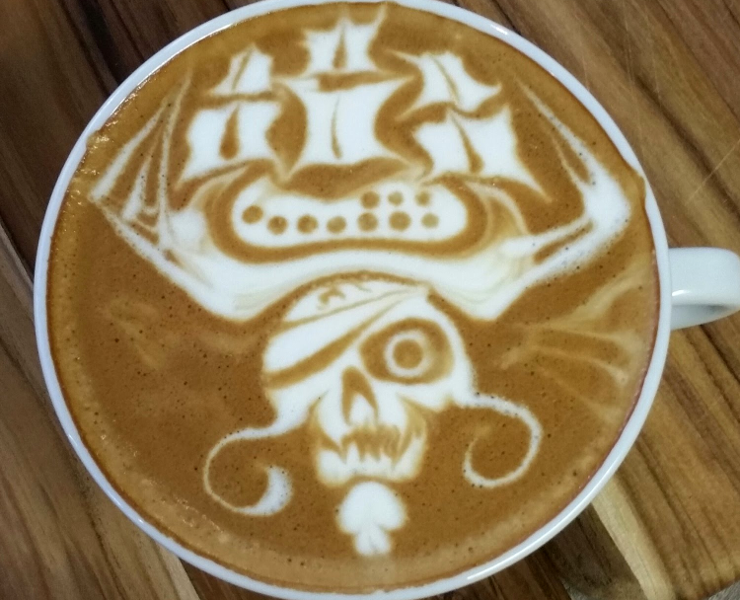Latte Art, Methods & Styles

Latte, also known as milk Chaffee, wiener melange, or grand creme, is a drink made by mixing espresso and steamed milk. Unknown to many people, there are differences between a latte and a cappuccino starting from the milk content to the foam thickness. Lattes are said to have originated from Italy. They are ideally taken for breakfast only, but were not rules made to be broken? Guilty pleasure! For quality Expresso & Lattes in Downtown, you want to have those brewed to perfection.
How to Make Latte
There are two methods used in making lattes.- Brew coffee in a pot then add to a cup of heated milk, no foam. Add sugar if desired.
- Pour a single or double shot of espresso into a 240ml cup followed by steamed milk. Add 12mm thick foam milk and sugar. Voila!
Types of Latte
As with anything good, there are several variants of latte. First there is iced latte, which is basically chilled milk poured over ice, added to espresso. Iced lattes always have sugar or flavoring syrups but lack foam. Second is the bootleg or ghetto or poor man's latte, which is served in a larger than normal cup and contains a lot of milk. Third is the cafe latte, which has a strong coffee flavor and made in the traditional latte way. Fourth is the latte macchiato which is 60ml-90ml in content. Unlike cafe latte, a macchiato is made by first adding milk to a cup followed by the espresso. There is also the red latte common in South Africa made using rooibos tea. Vegans and lactose intolerant people often opt for lattes made with goat milk or soymilk for health or belief purposes. Lattes can also be flavored with vanilla, chocolate, or strawberry depending on an individual's preference.Latte Art
Art is everywhere, from the tiles on your floor to clothes to food eaten. Latte art came to life in the 1980's. Latte art is, simply put, pouring milk in a shot of espresso in a way that results in a certain pattern. These patterns range from hearts, leaves, animal shapes, geometric shapes, and words to mention but a few. The quality of latte art is dependent on several factors namely, experience of the barista, quality of the espresso machine, type of milk and consistency in pouring. This art is in existence thanks to the discovery of crema - an emulsion of coffee oil and brewed coffee and milk foam, which is air foam in milk. Both emulsions are unstable, explaining why latte art does not last long. In the U.S., latte art was discovered by David Schomer in 1989 where he designed the heart pattern. In 1992, he made the rosette pattern from observance. He met over the internet with the Italian Luigi Lupi, with whom they shared ideas.Methods of Making Latte Art
Latte art can be made in two ways, etching, and pouring. In pouring, the pattern is made during the pour. Common patterns include hearts in macchiato and rosettes in lattes. Etching employs the use of a tool after the pour to develop a pattern. Metal cut outs are used in busy espresso and latte shops. Etching allows for more complex latte art but the art lasts for a shorter time. Employing latte art in San Diego Coffee Shop is one of the things that make a latte good alongside the quality milk, freshly roasted coffee beans and clean filtered water. Baristas should however be careful not to focus on the art and forget about the quality of the latte. The art is not only pleasing to the eye of the consumer. It also speaks a lot on a person's level of expertise and professionalism. In a world where social media is more important than keeping fit, latte art also gives you additional likes on your Instagram feed. Make sure to pass by Skybound Coffee Lounge in San Diego for a latte of your life. It's a renown latte art coffee shop.Tags:

